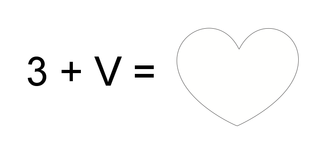Unconscious
What Is a Thought?
What thoughts are remains mysterious from a neuroscientific point of view.
Posted February 9, 2012 Reviewed by Abigail Fagan
In everyday life, it is common to hear someone say, "I just had a thought" or "the thought just occurred to me." For instance, one may have a thought about an event that took place during the last Super Bowl. Thoughts can be idea-like, memory-like, picture-like, or song-like. They are usually short-lived, discrete events, unlike continuous events such as the constant murmurs of air-conditioners or rain. We all experience thoughts and have no problem identifying them and speaking about them to others.
As quotidian as talk about thoughts may be, what thoughts are remains mysterious from a neuroscientific point of view. They are certainly caused by brain function, but we do not yet have a solid idea regarding what it is about brain function that gives rise to them. Is it the particular kinds of neurons involved? The way a population of neurons fire? Do conscious thoughts require the activation of specific networks of brain regions or of tracts (the information highways that allow for brain regions to communicate with each other)? Do thoughts require activation of perceptual areas of the brain (a controversial notion)? At this stage of scientific understanding, we just don't know.
It seems that, before one experiences a conscious thought, unconscious brain processes work behind the scenes to generate the thought. During this opaque process, unconscious representations and calculations seem to be involved. The great Hermann von Helmholtz referred to these behind-the-scenes processes as "unconscious inferences," and Wilhelm Wundt, the father of experimental psychology, referred to conscious thought as a high-level "apperception," because it involves more unconscious analyses and interpretations than does "normal perception," which, to him, could transpire unconsciously.
Edward Chace Tolman—the great experimentalist and theoretician in psychology—was the first to demonstrate that thoughts (e.g., memories about the layout of a maze) influence action. Tolman demonstrated that the maze-solving behavior of the rat could not be due to just external cues but required information that resided only in the rat's mind, information he referred to as a "cognitive map."
The fancy term for thoughts in cognitive science and neuroscience is "mental representation," which continues to be a tricky term because some thoughts (e.g., moods, the perception of tinnitus) do not seem to be very concerned with "representing." (There is also debate about whether thoughts are in a perceptual or non-perceptual format.) Tolman was the first to demonstrate systematically that thoughts are necessary to explain overt behavior.
After Tolman, the great cognitive psychologist Roger Shepard showed that people can actually manipulate these mental representations, as in the case of mental rotation—when one mentally rotates a mental image. (The pioneers Gallistel, Barsalou, and Kosslyn, along with others, also contributed to our scientific understanding of what a thought is.) Shepard's experiments involved subjects mentally rotating the kind of cubed object displayed at left.

Here is a demo of mental rotation from Pinker's How the Mind Works: Imagine the number 3 and rotate it 90 degrees counterclockwise. Now place the rotated object on top of a letter V. You should now have the thought of a heart. For many of you, this thought may trigger yet another thought—that Valentines Day is approaching.
For a primer on consciousness and the brain, click here.
For a humorous tale, by Morsella, involving a neurologist, click here.


